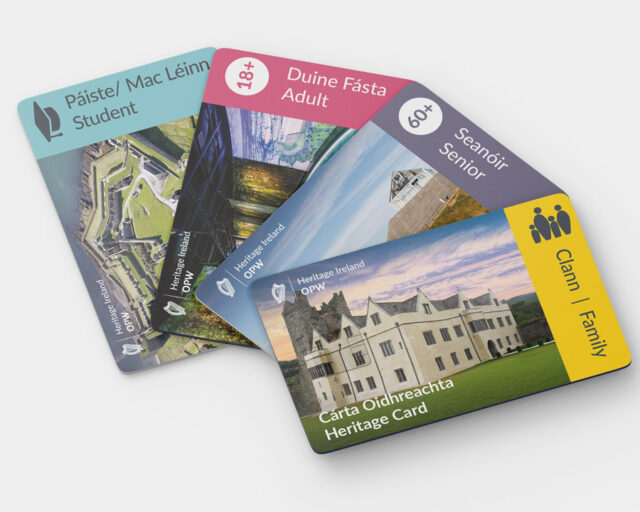Carlingford Castle Highlights (8)

Carlingford Heritage Centre
The Heritage Centre offers a fantastic introduction to Carlingford. Peruse the fine exhibition of historical records, maps and drawings illuminating the town’s history. The building is originally thirteenth century and was added to several times. By the early nineteenth century it was a Church of Ireland church. It was superbly renovated in 1992 to provide a state-of-the-art heritage, arts and community centre. It now hosts everything from concerts and talks to meetings and civil wedding ceremonies.

The Medieval Town
Carlingford still has much of its enchanting medieval character. Many buildings dating from the thirteenth to the sixteenth century have survived to tell tales of monastic settlement and Norman prosperity. Walk among the town’s streets, which are dark, hilly and narrow in parts, and be transported back hundreds of years to the bustling commotion of medieval life.

The Tholsel
Look around you during your stroll through Carlingford so you don’t miss the remains of the fine structures that map out the medieval town. The Tholsel, perhaps foremost among them, is the only surviving town gate in Carlingford and one of the few existing gates of its type in Ireland. It was part of the fifteenth-century walls and functioned as a toll-collection point. In the eighteenth century it was a place of detention for anyone who happened to fall foul of the law.
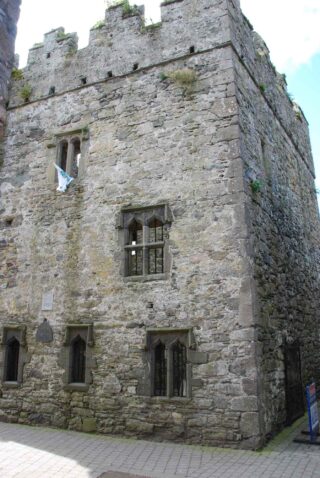
The Mint
Carlingford gained the right to mint coinage in 1467, but it is unlikely that the Mint was ever used for this purpose. In fact, this fifteenth-/sixteenth-century house was most likely the residence of a wealthy merchant family. Check out its five limestone windows, which are highly decorated in patterns and motifs from the sixteenth century – a telling example of the influence of the Celtic Renaissance on the art of this period.
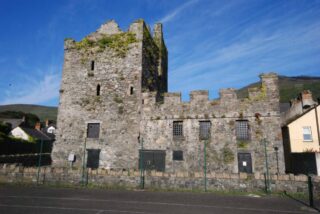
Taaffe’s Castle
Taaffe’s Castle, another of Carlingford’s impressive historic buildings, would have been occupied by wealthy merchants in later Norman times. It is likely that business was done on the lower level, while the owners lived on the floors above. The castle was built in two phases in the sixteenth century and was home to the Taaffe family, who became earls of Carlingford in 1661. It is an essential part of any visit to this remarkable little town.

The Dominican Friary
One of the oldest ruins in Carlingford, the friary dedicated to St Malachy was established in Carlingford in 1305. What remains is well worth seeing. The ruins consist of a nave and chancel divided by a tower, with a mill, mill race and mill pond to the south-east. The monastery was dissolved in 1540 under Henry VIII; then the Dominicans and the Franciscans struggled over it before Oliver Plunkett stepped in to resolve the dispute. The friary was abandoned in the eighteenth century, when the Dominican order moved to their present location in Dundalk.
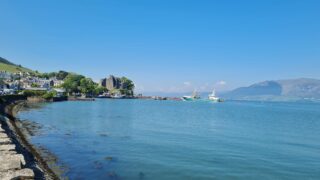
The Great Eastern Greenway
Mostly following the old railway line that connected Carlingford with the village of Omeath, the Great Eastern Greenway spans a distance of seven kilometres. The walk starts at Carlingford Marina and skirts Carlingford Lough in the shadow of Slieve Foye to the west. To the east, across the fjord, lie the majestic Mourne Mountains. Enjoy the wonderful mountain and sea views on this tranquil route, which abounds with wildlife, trees and flowers. The route is suitable for all grades of walker, including families and novices.
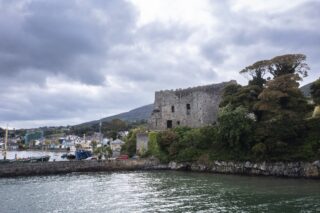
Take a Hike – Slieve Foye Woods and the Táin Way
Carlingford is a great base for hiking and offers many graded trails. The gentler ones can be found near the town, while more challenging routes will take you up the slopes of Slieve Foye and through the Cooley Mountains. The views of Carlingford Lough and the Mournes make these trails well worth the effort. The Commons loop walk, which brings you up above the town to the open mountainsides, is a good option for families, but remember to take care on the narrow roads leaving and returning to the town. Meanwhile, the Táin Way offers a more challenging hike for seasoned walkers, who will be rewarded with spectacular views of the Cooley Mountains, Dundalk Bay, Carlingford Lough and the Mourne Mountains.
